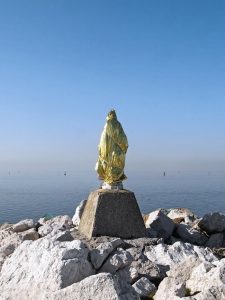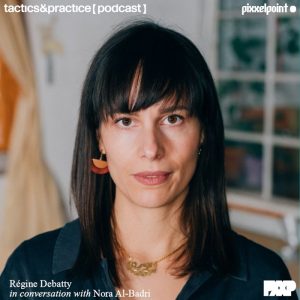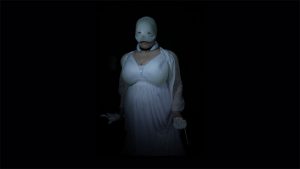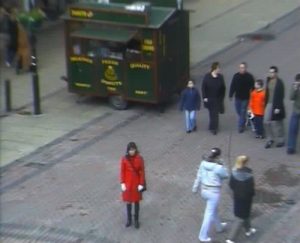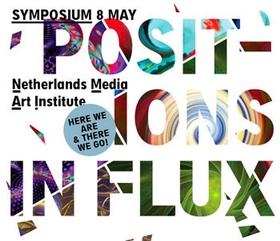 The Netherlands Media Art Institute has re-located part of its brain power to Trouw Amsterdam for the symposium Positions in flux: On the changing role of the artist and institution in the networked society. The symposium is part of the Here we are – There we go programme which celebrates the 30th anniversary of the Netherlands Media Art Institute (NIMK). The institute opened its doors during the weekend and visitors could experience some of the artworks the NIMK has been supporting over the past three decades.
The Netherlands Media Art Institute has re-located part of its brain power to Trouw Amsterdam for the symposium Positions in flux: On the changing role of the artist and institution in the networked society. The symposium is part of the Here we are – There we go programme which celebrates the 30th anniversary of the Netherlands Media Art Institute (NIMK). The institute opened its doors during the weekend and visitors could experience some of the artworks the NIMK has been supporting over the past three decades.
One of them, Adad Hannah & Niklas Roy’s International Dance Party, made me laugh out loud for its way to bring interactivity to its more extreme and absurd. This ‘party in a box’ looks like an ordinary and closed ‘flightcase’ until you get nearer and start moving. The more you jump around and dance, the more the system will deliver: powerful dance music, laser and light effects and even (but i didn’t dance wild enough to experience it) fog.

The symposium focused on three of the most relevant topics of current media art practice: the relevance and involvement of new media art on the political and social sphere; new geographies in media art; the possibilities and challenges that the open source movement is proposing to the production of artworks or exhibitions.
Given my total and shameful laziness i probably won’t have/take the time to blog everything but the Netherlands Media Art Institute will upload the videos of the talks online in the future and i’ll be sure to update this blog post when this happens.
Susanne Jaschko, who curated and organized the conference, made a couple of very timely and interesting remarks in her introduction to the symposium. And that’s where i’ll start:
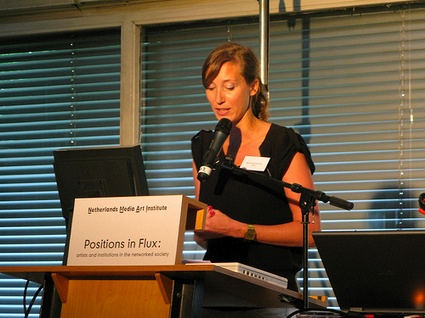 Image from NIMK’s Positions in Flux set
Image from NIMK’s Positions in Flux set
There are some traces of an acceptance of new media art from the institutional art world. Last year, two exhibitions have highlighted this tendency: Deep Screen – Art in Digital Culture at the Stedelijk Museum in Amsterdam, a show organized with a double objective: getting a sample of contemporary media artists living in The Netherlands and buying some artworks to be added in the permanent collection. The second exhibition, Holy Fire at iMAL in Brussels, had the so far very unusual purpose to explore how new media art, bypassing all the stereotypes connected with its presumed immateriality and difficulties of maintenance, was able to enter the art market.
Media art has come a long way since the NIMK opened. Which does not mean that the self-conception of the whole field is not as cloudy as ever: some say that new media art has never become mature, others believe that it has reached its peak in the ’90s, others would add that new media art will never integrate concepts of contemporary art, etc. Not only is the Netherlands Media Art Institute celebrating its 30th anniversary, but Transmediale has just turned 20 and Ars Electronica is going to be 30 this year, it’s time to take a critical look at where we are now and which directions we want to take.
There was a time when cultural funding bodies set the course but things started to take another turn when, in 2003, the Walker Art Center decided to reduce its media art programme to a minimum and last year the whole media art community was shocked by the news that the Institute of Contemporary Art in London was closing its performance and new media program. Artistic Director Ekow Eshun justified the decision as follows:
As an institution dedicated to the contemporary moment it is important that we continually review the timeliness and relevance of our activities and at times make decisions on that basis.
New media based arts practice continues to have its place within the arts sector. However it’s my consideration that, in the main, the art form lacks the depth and cultural urgency to justify the ICA’s continued and significant investment in a Live & Media Arts department. Following discussion with the ICA Council and the Arts Council – and agreement from both bodies – I have decided to close the department.
At the other end of the spectrum, LABoral Art and Industrial Creation Centre, which opened in 2007, has proved over and again that it is possible to fill its gigantic white space with new media art exhibitions of great quality. And, once again, the exhibition Deep Screen at the Stedelijk has shown that some contemporary art institutions see the relevance of new media art.
So what does it mean today to be an artist in a networked society? Artists, curators and institutions today work on grounds that are increasingly loose, they struggle to define themselves. Technology -though it has lost much of its fascination- has the potential to enrich art, culture and society. It is one of the driving forces of today’s society and culture, it has brought important discussions about public domain, commitment, open source, etc.
More about the symposium soon…

